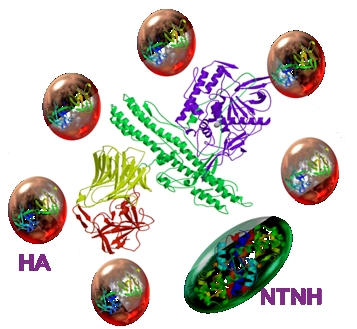The formula of botulinum toxin has been known for a long time, however, studies of the role of certain components of this substance are still ongoing.
Both doctors and scientists are interested in what role excipients play – excipients in the botulinum toxin formula, such as proteins, salts, sugars. After all, it is not in vain that bacteria synthesize botulinum neurotoxin in this form. Each component of this formula has its own role and purpose.
On estet-portal.com read why non-toxin proteins are needed as part of botulinum toxin.
The main features of the structure of botulinum toxin
Botulinum neurotoxins are synthesized by clostridial bacteria in the form of protein complexes consisting of the main neurotoxin and a number of associated non-toxic auxiliary proteins. The core of this complex - botulinum neurotoxin is a protein (150 kDa), which consists of a heavy chain - 100 kDa and a light chain - 50 kDa, connected by a disulfide bridge.
The non-toxin components of botulinum toxin are represented by hemagglutinin and non-hemagglutinin non-toxin proteins that spontaneously associate with the main neurotoxin after their co-synthesis by bacteria.
Non-toxin proteins have been shown to help stabilize and protect the underlying neurotoxin from temperature changes, low pH, and enzymatic degradation.
Read also: Botulinum Toxin Diffusion: Why It Matters

Do botulinum toxin excipients affect immunogenicity
All modern preparations of botulinum toxin contain albumin – an excipient that helps stabilize the product and ensures it is reconstituted in the vial. Albumin is usually non-immunogenic (anaphylactic response rate to infusion at high concentrations 0.011%).
Thus, the use of this protein is unlikely to elicit a significant immune response, especially at low doses in which it is used to bind botulinum neurotoxins.
Other excipients used in the botulinum neurotoxin formula, including sugars (sucrose, lactose) and salts (sodium chloride, sodium succinate), do not induce or enhance an immune response.
These data suggest that drugs such as Botox® from company «Allergan», containing complexing proteins, do not have increased immunogenicity, but, on the contrary, thanks to non-toxin proteins, they are protected from the formation of antibodies to the core of botulinum toxin.
Read the latest articles in Telegram!
Relationship between botulinum toxin efficacy and complexing proteins
To date, there is no published clinical data to support the hypothesis that complexing proteins can increase the immune response to botulinum toxin administration.
In fact, scientists say that non-toxin proteins cover the immunogenic part of the main toxin, thereby preventing the formation of neutralizing antibodies, and protecting the toxin from their potential impact.
Thus, the non-toxin proteins that make up Botox® (750 kDa) provide protection and stability of the main neurotoxin protein (150 kDa) responsible for muscle relaxation. from the official distributor.
Read also: Botox injections® in different age periods: when and what we correct







Add a comment